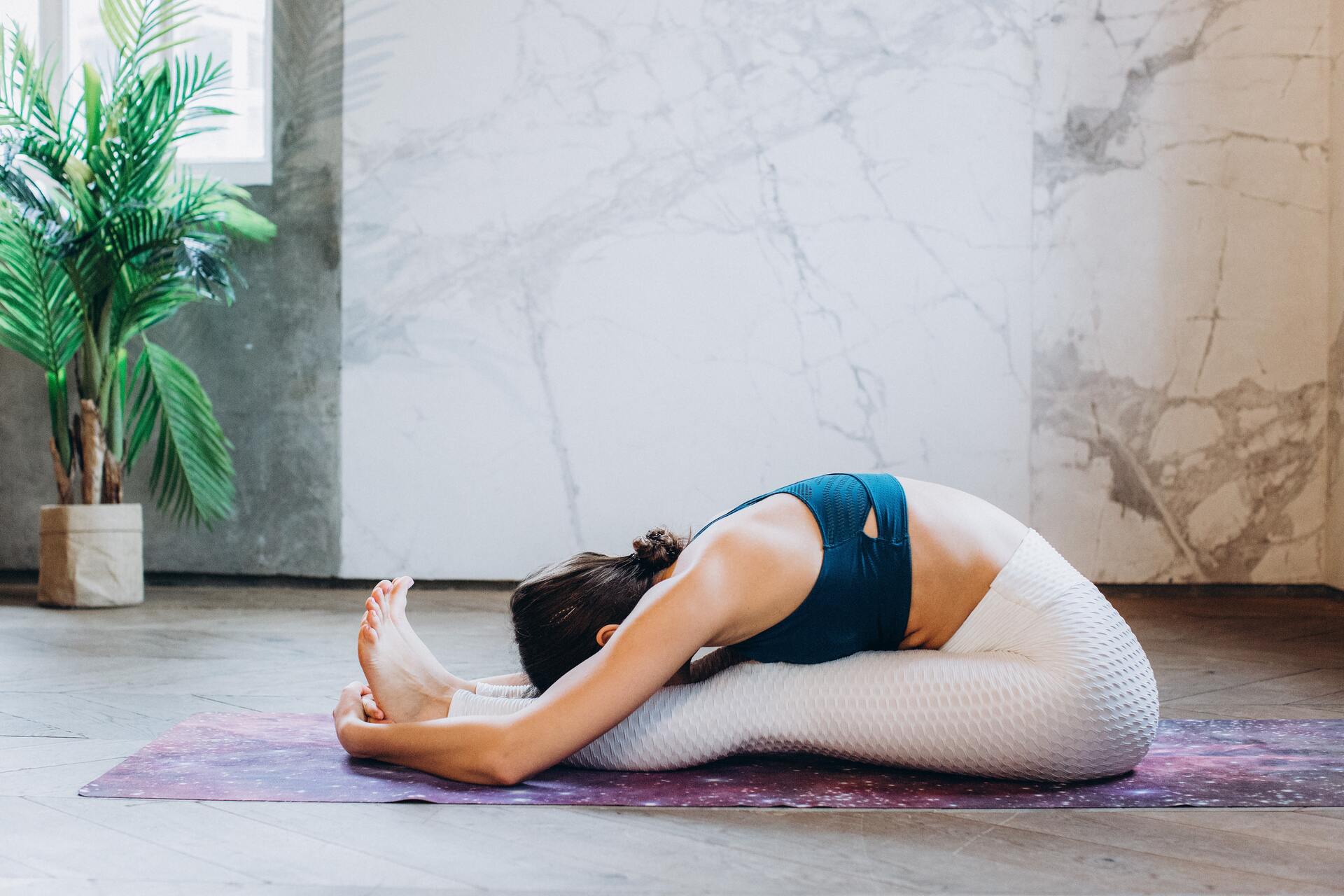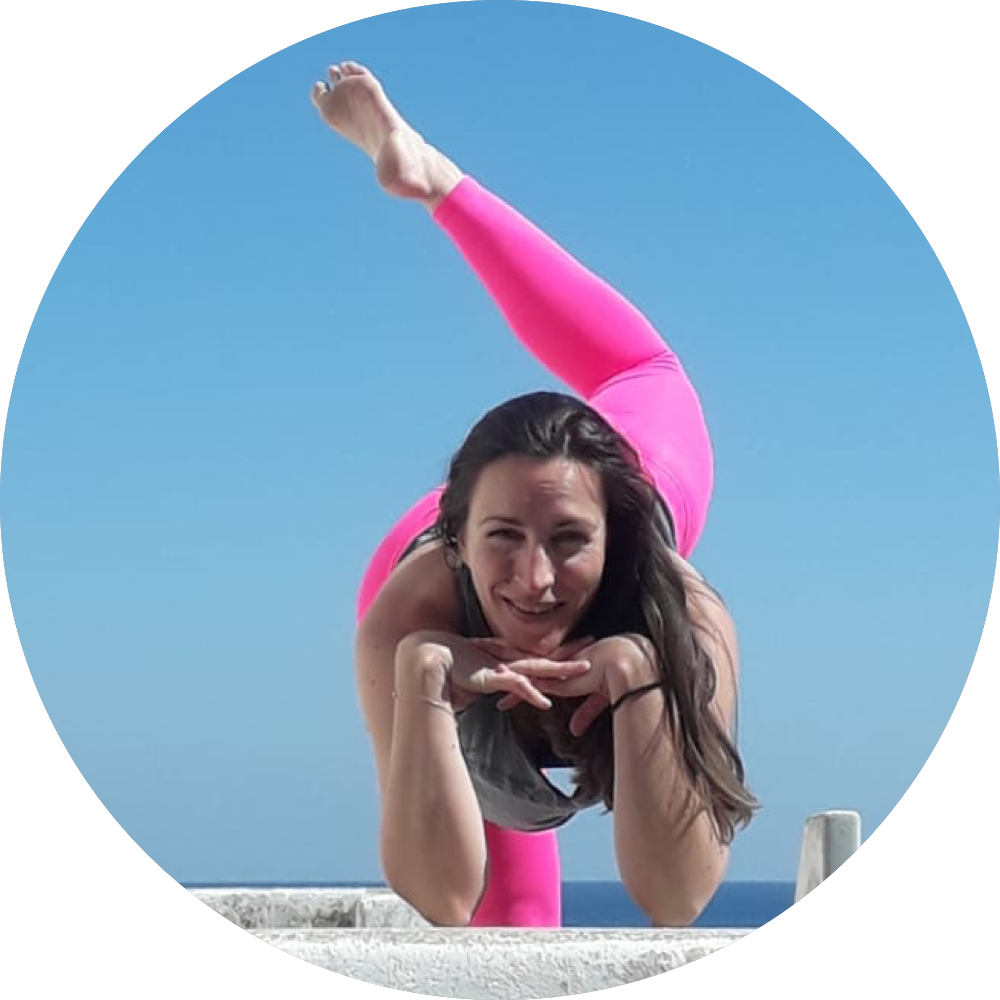
Finding your Yin in all the Yang
Finding peace and stillness in a world that’s constantly moving and changing fast allows us to reset, regenerate, and adapt. I realized my life was in need of more balance and therefore more yin slow energy to complement all the other yang activities I was performing each day. I needed a yin break!
When it comes to Yin Yoga, if you’ve never practiced it and someone tells you you’re going to stay a very long time in the same pose in stillness and maybe do 5 poses max in a 60-minute class, there is a good chance you politely decline the offer. I won’t judge you; this is how I felt the first time. Little did I know I would simply fall in love with this practice so much so that I ended up enrolling in a Yin teacher training so I could learn more about the benefits and the philosophy behind it and share it with others. This is how Yin started to infuse into my everyday life, all for the good.
Let’s talk about philosophy, taijitu and tattvas
First of all, I love this definition of the Daoist concept of the Yin and the Yang: they go together, and one doesn’t go without the other. Another way of describing it would be using one word: Balance. Yin and Yang are two opposite yet complementary energies that symbolize the cycle of life: when the yang and the yin energies are evenly present and distributed, everything is perfection. Yet there is no absolute, and the concept is always relative and depends on the context. To go further with it, everything that is conceived also creates its opposite: short creates long, beautiful creates ugly, easy creates difficult, and so on. In other words, Yang creates yin, and yin creates yang. We all are familiar with the Yin and Yang sign, often used as a symbol of peace; it’s called the Taijitu in Chinese and represents this cycle of opposite and complementary energies. The Yang energy is the more active energy that is associated with dynamic movements, rapid, hot, and light, and with the Sun energy whereas Yin energy is more passive, colder, darker, slower, and more solid; it is associated with the moon energy. It is also said that Yang energy is more masculine and Yin is feminine energy.
In our modern societies, most of us live very Yang lives: juggling between family, work, children, and social life; we are told to be active, we need to be in good shape, to be the best parent, the best colleague, the best friend, and the list goes on. And it can be even more pronounced in big cities where everything goes so fast all the time; we get caught in spinning cycles: metro-work-sleep and we try to fit all the rest in between, which can be exhausting. If we leave sleep apart, when was the last time you sat down and stayed still, simply doing this underrated activity that is called: doing nothing? My guess is that it must be a long time ago, or maybe never, and if it has happened, it could be quite hard to admit it as doing nothing is something we tend to associate with being lazy in our society.
Yin yoga offers us the opportunity to stop for a bit and to just be.
Writer and yoga teacher Sarah Powers describes the 3 Tattvas –principles or reality of something in Sanskrit- of Yin Yoga as follows:
- Come to the pose in an appropriate depth
- Resolve to remain still
- Hold the pose for some time
And we could even add a 4th one, as my Yin teacher Gemma always says:
Relax and let go!
Finding balance
As a yoga student, I noticed that often there is little room for meditation and even savasana might be quite short at the end of a class in most yoga studios. We are simply not used to doing that something we call nothing. It has become almost unbearable to just stay in a pose, even the simplest one, and to just Be with oneself for 5 to 10 minutes. This is why I guess when I present what my Yin Yoga class is to people new to it, they are often put off by the so-called inactivity compared to a good vinyasa flow sweat. There is nothing to compare, though. I love both types of yoga, and the reason is simple: I need both: the Yang energy powered by a dynamic Vinyasa flow class and the slower, deeper Yin class, especially in the evening when it sends me directly to bed to a deep relaxing, and restful sleep. As Yin yoga teacher and yin specialist Bernie Clark, says: Listening to your inner voice might be the best guide to answer the question: is this a time for yin or yang?
Following his advice, I developed the habit of listening to myself and noticing when I lack some yin time to balance my busy day, and reversely, it happens that my energy is sometimes really low -let’s say on a cold rainy Sunday when I don’t teach or write- and then I know that at that moment, even if I feel low in energy, what I need is a good yang boost to bring some juice in my body and balance in my day. But most of the time, my life is quite full, my head too, I feel like I’m juggling with so many different hats, and it just feels nice to take a break. I try to practice yin yoga 2 or 3 times a week and even more if I have a significantly busy schedule. Then, I know that I need to rest my mind and deep-stretch my body. And something that is always true: the more reluctant I am to practice, the more I need it!
The art of being still
Sometimes, I struggle with my body and my mind not to fidget, and I try to understand what’s blocking me. Deep breaths help me relax and finally find my peace in stillness, and it’s one of the greatest feelings: to observe and let my thoughts pass like clouds in the sky, not to hold on to any of them but just be the silent observer, without judging. I usually feel so much lighter and rejuvenated after yin-ing for an hour or more. Every time I teach or I talk about yin, I like to talk about the Goldielock metaphor that my teacher always used during teacher training: Goldielock doesn’t choose the bed that’s too hard, nor the one that’s too soft, and like her, you need to find your Goldielock yin point: not too hard, not too soft in the pose, but just the right amount, so that you feel something is happening in the tissues, but you’re never in pain, and you can let go and relax. Unlike in the fitness world, where I have often heard: no pain, no gain. In Yin yoga, we say: No pain, no Pain ☺
Benefits of Yin energy
In addition to that sense of balance of energies in my life, what drew me to go deeper into Yin practice is also the work on deep tissues, joints, and fascia (read my first article of the series on fascia if you haven’t yet!) as I realized my body flexibility improved dramatically with a regular yin practice -and not just body flexibility but mind flexibility too! I started teaching Yin Yoga 3 years ago, and I quickly realized how I love teaching it and seeing relief and joy in stillness in my class is always one of the best feelings and rewards of this job. In Yin, I constantly learn more about my body and my internal rhythm, and I redefine its edges. I let my body feel, I listen to it and take what the pose is offering me, and this is different each time. I accept that sometimes, it simply doesn’t work, and I just get out of the pose or adjust it in a different way. Holding poses for some time stimulates our plastic tissues so they can really stretch and lengthen. When you start to let go and melt into the pose, the magic happens, and you start feeling the pleasure of ease and relief: you are experiencing the yin-stoned sensation.
Take a Yin break
(Warning: you might get Yin-stoned!)
I suggest you practice this short sequence just before bedtime; as a matter of fact, you can also practice it in bed and just let yourself fall into Morpheus’ arms while in savasana. Remember to collect some cushions, maybe a bolster, so you can feel supported and get super comfy in the poses.
Reclined Butterfly with Fish option
5 to 10 Minutes
Lying on your back, fold your legs, and bring the soles of your feet together, and open your knees, allowing them to drop towards the bed like butterfly wings. Rest here, allowing your inner thighs, hips, and adductors to gently open and stretch. Take deep breaths and get deeper into relief with each exhale. If the stretch is too intense, place some pillows under your knees.
If you want a deeper experience, add a bolster –or cushions- under your back, below the shoulder blades, and let your chest and your heart open. If it is too intense in your neck and for your cervical spine, place another cushion under your head to support and ease the opening in the throat.
Always slowly get out of the pose, really take your time to extend your legs and remove the props, gently stretch and bring your knees towards your chest for a knee hug, and gently rock from side to side. Then, lay down in Savasana and observe what’s happening in your body. This transitional rest is called the rebound and it allows the body to register the benefits of the pose.
Caterpillar
5 to 10 Minutes
Sitting down on the bed, with your legs extended or knees slightly bent –do not hesitate to place some supports under so you can totally let go. Take a deep inhale and create space in your spine, slightly opening your chest and fold as you exhale, first try to drop your chest towards your knees, and when you feel resistance just relax in the fold and make it completely passive. Take a moment to perform a mental body check and see where you still feel tension; what can you relax further? Use your exhale to relax and let go of tension.
Take a few minutes to gently stretch and feel the effects of the pose on your body. You can lie down in savasana or in a happy baby pose for 3 minutes.
Reclining twist
5 to 10 Minutes on each side
Lying on your back, draw your knees into your chest. Allow your legs to gently fall to your left and try to release any tension in your legs. Open your arms in a big T shape or you can rest your right hand on your right hip, whatever feels comfortable for you in that moment. Allow your right shoulder to relax and release toward the mat/bed. Breathe deeply. You can always place a cushion in between your thighs so you allow a bit more space in the hips. Switch sides.
Slowly get out of the pose, take any movement your body needs, and prepare your nest for savasana/falling asleep…
Enjoy your Yin feeling, good night, and sweet dreams...


